Ivanhoe (1952 film)
7.2 /10 1 Votes
Duration Language English | 7/10 IMDb Genre Adventure, Drama, History Music director Miklos Rozsa Country United States | |||||||||||||||||||||||||||||||||
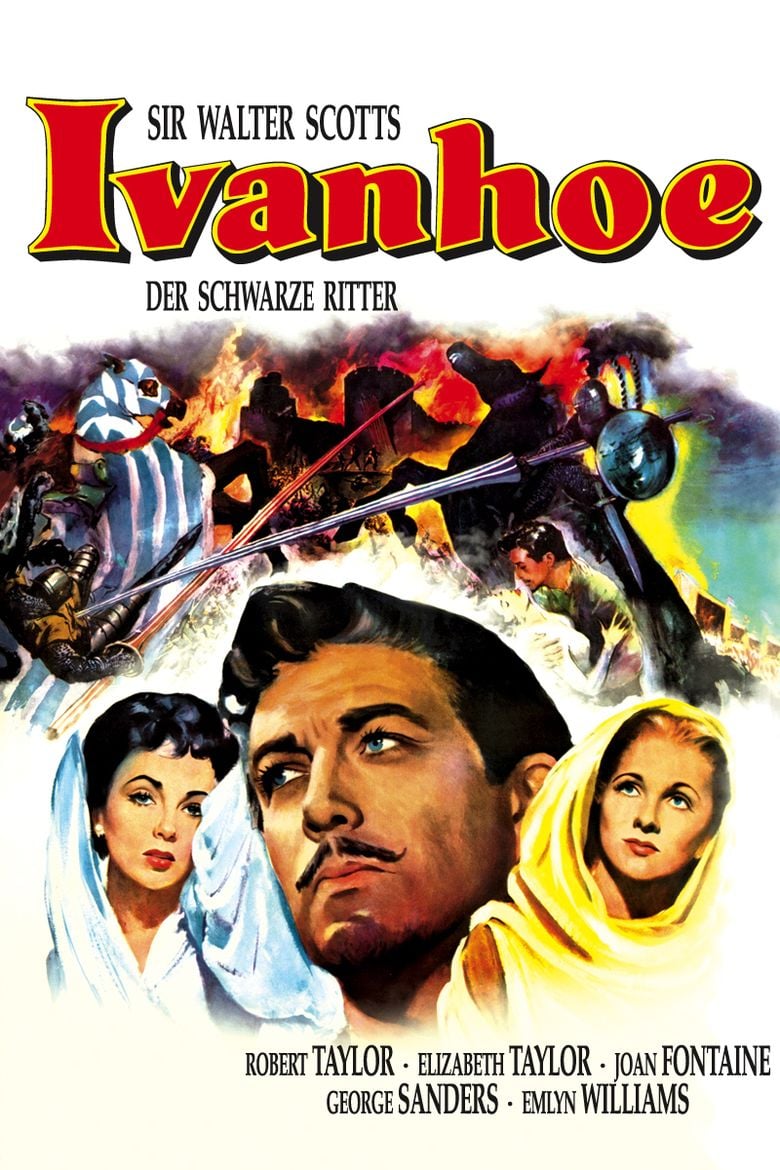 | ||||||||||||||||||||||||||||||||||
Release date July 31, 1952 (1952-07-31) (United States) Cast Robert Taylor (Ivanhoe), (Rebecca), (Rowena), (De Bois-Guilbert), (Wamba), (Sir Hugh De Bracy)Similar movies Robin Hood: Prince of Thieves , Robin and Marian , A Challenge for Robin Hood , Robin Hood , Robin Hood , Shrek Tagline At Last on the Screen ! Biggest Spectacle since QUO VADIS! | ||||||||||||||||||||||||||||||||||
Ivanhoe official trailer 1 george sanders movie 1952 hd
Ivanhoe is a 1952 British-American film in Technicolor, directed by Richard Thorpe and produced by Pandro S. Berman for MGM. The cast features Robert Taylor, Elizabeth Taylor, Joan Fontaine, George Sanders, Emlyn Williams, Finlay Currie, and Felix Aylmer. The screenplay is by Æneas MacKenzie, Marguerite Roberts and Noel Langley, based on the historical novel Ivanhoe by Sir Walter Scott.
Contents
- Ivanhoe official trailer 1 george sanders movie 1952 hd
- Ivanhoe 1952 fight actions compilation
- Plot
- Production
- Box office
- Critical reception
- Differences from Scotts novel
- Comic book adaption
- References
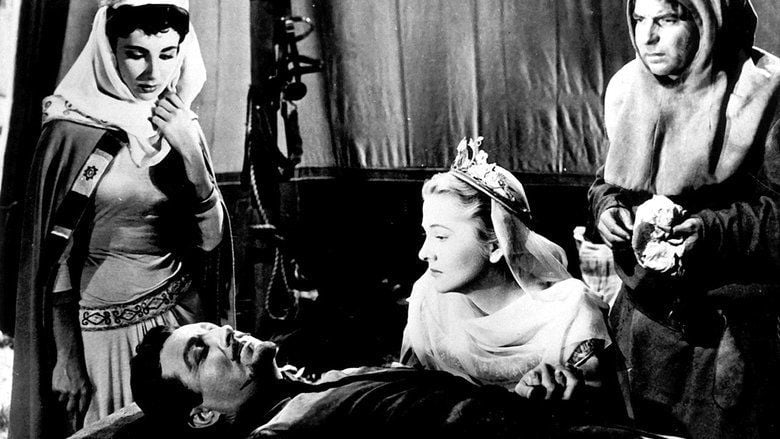
The film was the first in what turned out to be an unofficial trilogy made by the same director and producer and star, Robert Taylor. The others were Knights of the Round Table (1953) and The Adventures of Quentin Durward (1955). All three were made at MGM's British Studios at Elstree, near London.
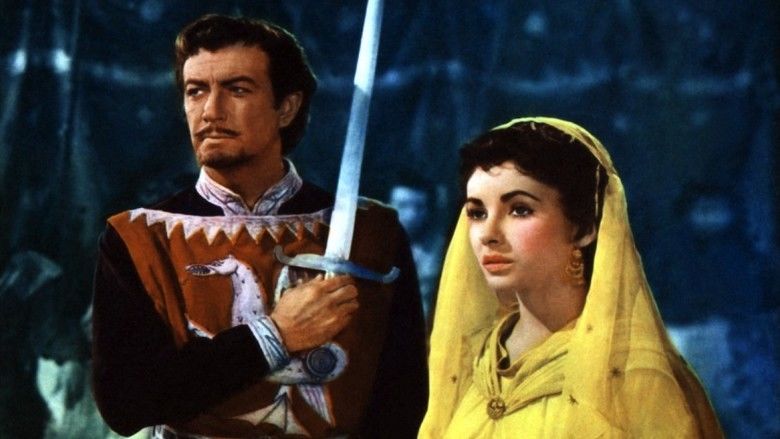
During the production, one of the screenwriters, Marguerite Roberts, was blacklisted by the House on Un-American Activities Committee, and MGM received permission from the Screen Writers Guild to remove her credit from the film.

Ivanhoe 1952 fight actions compilation
Plot
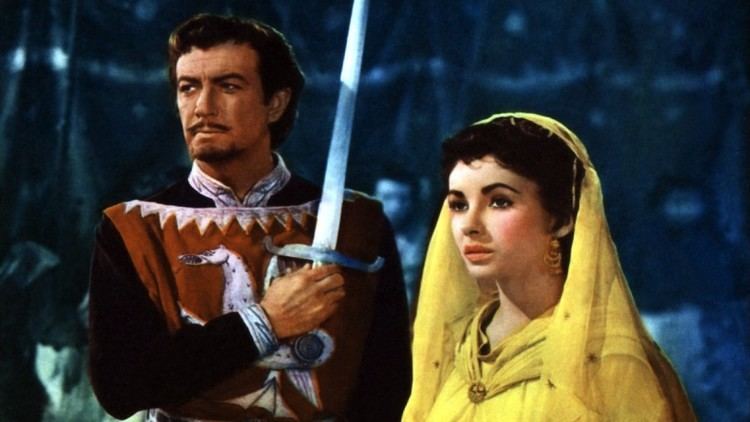
Richard the Lionheart (Norman Wooland), King of England, vanishes while returning from the Crusades. One of his knights, the Saxon Wilfred of Ivanhoe (Robert Taylor), searches tirelessly for him, finally finding him being held for ransom by Leopold of Austria for the enormous sum of 150,000 marks of silver. Richard's treacherous brother, Prince John (Guy Rolfe), knows about it, but enjoys ruling in his absence.

Ivanhoe returns to England, to the house of his estranged father, Cedric (Finlay Currie), to be reunited with his love and Cedric's ward, the Lady Rowena (Joan Fontaine), and to beg his father's help in raising the ransom. Cedric refuses to help a Norman king and orders his son to leave. Wamba (Emlyn Williams), Cedric's court jester, begs to go with Ivanhoe and is made his squire.

Two separate parties of travellers arrive and are granted Cedric's hospitality: a Jew, Isaac of York (Felix Aylmer), and Norman knights Sir Brian de Bois-Guilbert (George Sanders) and Sir Hugh de Bracy (Robert Douglas), and their entourage. That night, two of the Normans try to rob Isaac, but are foiled by Ivanhoe. Not feeling safe, Isaac decides to return to his home in Sheffield; Ivanhoe offers to escort him there.

When they reach Isaac's home, Ivanhoe secures his help raising the ransom in return for better treatment for the Jews once Richard returns. Rebecca (Elizabeth Taylor), Isaac's daughter, visits Ivanhoe secretly in the night to reward him for rescuing her father; she gives him jewels to purchase arms and a horse for an important upcoming joust. She falls in love with him, despite the great social gulf between them, in that Jews are not allowed to marry Gentiles.
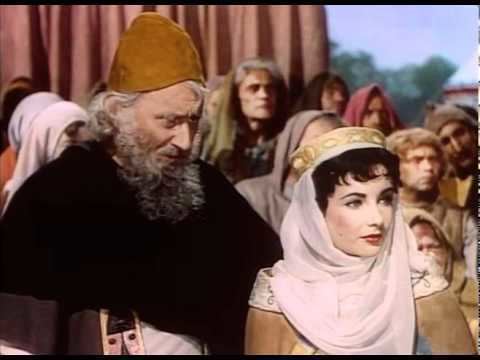
Nearly everyone of note is at the tournament, including Prince John. Norman knights loyal to him defeat all comers. Just when it seems that they are victorious, a mysterious new Saxon knight appears, arrayed all in black, with white trim, his face hidden behind his visor. He does not give his name, but challenges all five Norman champions. He easily defeats the first three, Malvoisin, Ralph, and Front de Boeuf (Francis de Wolff), one after the other, and also wins the fourth bout against de Bracy, but is seriously wounded in the shoulder. He is soon identified by many as Ivanhoe. When Ivanhoe salutes Rebecca after his first victory, Bois-Guilbert is immediately smitten by her beauty. In the last joust against Bois-Guilbert, the injured Ivanhoe falls from his horse. He is carried off, to be tended to by Rebecca.

Fearing Prince John's wrath, the Saxons depart; Ivanhoe is taken to the woods under the protection of Robin Hood (Harold Warrender). The rest make for the city of York, but are captured and taken to the castle of Front de Boeuf. When Ivanhoe hears the news, he gives himself up, in exchange for his father's freedom. However, the Normans go back on their word and keep them both. Robin Hood's men besiege and storm the castle, freeing most of the captives. In the fighting, de Boeuf drives Wamba to his death in a burning part of the castle and is slain in turn by Ivanhoe. Bois-Guilbert alone escapes, by using Rebecca as a shield, while de Bracy is defeated and captured by Ivanhoe after attempting to do the same with Rowena.
Meanwhile, the enormous ransom is finally collected, but the Jews face a cruel choice: free either Richard or Rebecca, for Prince John has set the price of her life at 100,000 marks, the Jews’ contribution. Isaac chooses Richard. Ivanhoe entrusts the ransom delivery to Cedric, but promises Isaac that he will rescue Rebecca.
John presides over Rebecca's trial for witchcraft, a kangaroo court. Rebecca is condemned to be burned at the stake as a witch, but Ivanhoe appears and challenges the verdict, invoking the right to "wager of battle," which cannot be denied by either common or canon law. However, Prince John has the right to select the court's champion. He chooses the conflicted Bois-Guilbert as his champion. Bois-Guilbert makes a last desperate plea to Rebecca: in return for her love, he is willing to forfeit the duel, though he would be degraded from knighthood and forever disgraced. She refuses, saying "We are all in God's hands, Sir Knight."
In the battle to the death, presided over by Malvoisin, Bois-Guilbert has first choice of weapons and selects a mace and chain, leaving Ivanhoe with the battleaxe. For most of the battle, Bois-Guilbert has the upper hand. Ivanhoe is unhorsed and has his shield torn from his arm by the mace and chain as he continues to fight from the ground. However, Ivanhoe uses the shaft of his battleaxe to snare Bois-Guilbert's chain mace and pull him from his horse. Bois-Guilbert is mortally wounded by the fall and Ivanhoe's skill with the axe. As he lies dying, Bois-Guilbert reaffirms to Rebecca that it is he who loves her, not Ivanhoe. Rebecca accepts that Ivanhoe's heart has always belonged to Rowena, which causes both women to put their differences aside, and they reconcile.
King Richard and his knights (with Cedric as an escort) return to reclaim the throne from the usurper Prince John. The King calls on his kneeling people to rise, not as Normans or Saxons, but as Englishmen.
Production
In 1951, the film's scriptwriter Marguerite Roberts was ordered to appear before the House on Un-American Activities Committee, where she and her husband, John Sanford, cited the Fifth Amendment and refused to answer questions about whether they had been members of the American Communist Party. Consequently, they were both blacklisted, and MGM received permission from the Screen Writers Guild to remove Roberts' credit from the film. It would take nine years before she was allowed to work in Hollywood again.
Scenes were filmed at Elstree Studios, London, and on location at Doune Castle, Scotland.
Box office
Ivanhoe was released in the summer of 1952. In its opening 39 days, the film took $1,310,590 at the box office, setting a new record for an MGM film. According to the studio records, it made $5,810,000 in the US and Canada and $5,086,000 elsewhere, resulting in a profit of $2,762,000. It was MGM's biggest earner for 1952 and one of the top four money-makers of the year. It was also the fourth most popular film in England in 1952.
Critical reception
The film was nominated for three Academy Awards: Pandro S. Berman for Best Picture, Freddie Young for Best Cinematography, Color, and Miklós Rózsa for Best Music, Scoring. In addition, Richard Thorpe was nominated by the Directors Guild of America, USA, for Outstanding Directorial Achievement in Motion Pictures. There were also two Golden Globe Award nominations: Best Film Promoting International Understanding and Best Motion Picture Score, for Miklós Rózsa.
Differences from Scott's novel
The film omits the characters Aethelstane, Lucas Beaumanoir, and Gurth, while the Crusaders play no role. Ivanhoe's early injuries are modest and he plays a very active role throughout the film. Unlike the novel, King Richard is not involved until the final scene, when he and his knights ride in (costumed as Crusaders). In the novel, Rebecca is tried and nearly executed by the Templars, not Prince John.
In the film, Wamba the Jester (in whom the book's characters of Wamba the Jester and Gurth the Swineherd are combined), dies in the course of freeing Cedric and the other captives from the castle of Front de Boeuf. Wamba does not die in Walter Scott's original novel.
The film includes Rebecca and her father in King Richard's statement that all are "for England." At the end of the novel, the two leave England, overwhelmed by her ordeal and by the strength of popular hatred.
The visual spectacle is given more attention than the dialogue and underlying story, with a notable jousting scene as well as a well choreographed castle siege sequence, though the main points of the plot are covered.
Comic book adaption
References
Ivanhoe (1952 film) WikipediaIvanhoe (1952 film) IMDb Ivanhoe (1952 film) themoviedb.org
